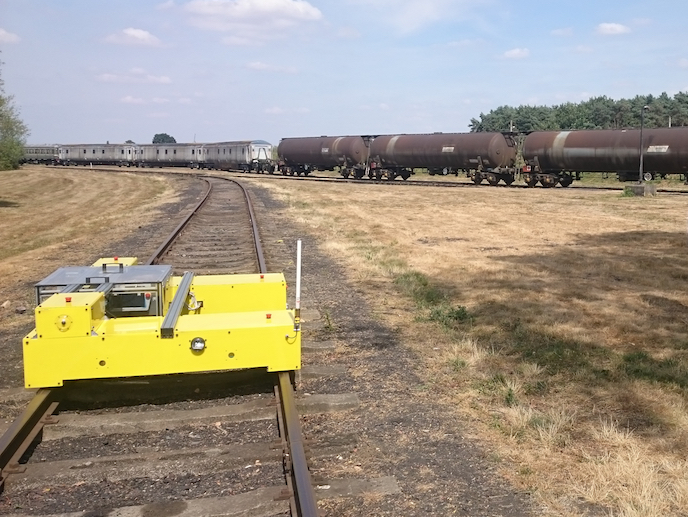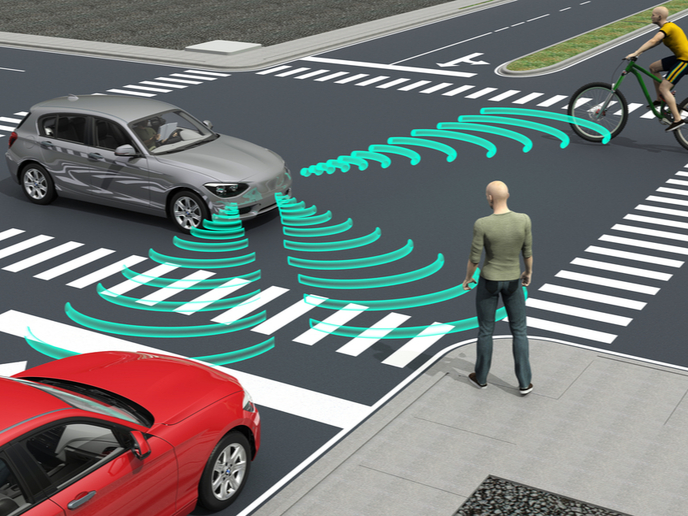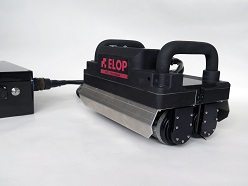Autonomous inspection trolley for better train track maintenance
For 2015, the EU Agency for Railways (ERA)(opens in new window) reported 4 169 broken rails around Europe, amongst 215 720 km of track. Broken rails are the chief cause of derailments, resulting in major disruption to services and sometimes even loss of life. The repair cost to Member States is estimated at around EUR 2 billion annually, not including service delays and cancellation costs. With a rise in train traffic, train speeds and load carried, the need to improve rail infrastructure is becoming pronounced. The EU-supported AutoScan system comprises an autonomous rail trolley, pre-programmed to travel over tracks using mounted sensors to scan for defects. When a flaw is found, the trolley returns to the location for a robotic arm to perform a detailed rail head inspection, enabling network operators to make an accurate assessment and schedule repair work. The Rolling Contact Fatigue (RCF) Scanner Currently, to maintain rail track integrity, operators run dedicated inspection trains to take rough track measurements. Handheld inspection devices can then be deployed and operated manually to more accurately locate and measure flaws. The AutoScan system comprises an autonomous inspection trolley with a payload area that can carry and integrate various inspection systems. Currently, the trolley uses electromagnetic acoustic transducers (EMATs) to detect instances of rolling contact fatigue. Once flaws are detected, this ‘first-pass’ information is augmented by a robotic electromagnetic inspection from different angles, logging size, shape and position, offering a detailed topographical view of the defect. To use the system, operators programme details of the track section to be inspected into the RCF Scanner. The self-powered trolley is then brought to the track at a suitable starting point, (e.g. a level crossing) and set in motion. Findings are uploaded during inspection to the cloud-based track maintenance management system, providing information for operators which will determine follow-up actions, such as repairs and/or the setting of speed restrictions. “Unlike manual inspection, much larger track sections can be inspected, simultaneously. Compared to inspection trains, there is also the cost effectiveness and ease of deployment. Ultimately, the interval between inspections and repair is reduced drastically, benefiting both rail companies and passengers,” says project coordinator Dr Frederik Vermeulen. The project consortium has validated the technology's capability both in the lab and on the track. Interested parties can request a pilot be set up locally to validate that the technology works for their setting. Towards greener transport By enabling more frequent track inspections – and so increasing fault detection and intervention – AutoScan significantly reduces train infrastructure lifecycle costs. The project team have calculated that overall inspection costs will be reduced by at least 15 %. Additionally, as inspectors no longer need to walk track side, safety for personnel is increased. With rail offering the potential to be Europe’s most energy-efficient transport mode, these benefits contribute to the EU’s drive towards greener transport options, which can only be achieved if rail travel is reliable, cost-effective and safe. The AutoScan product is designed and delivered as a modular concept. “To date, the separate modules have been available to the market in a variety of guises, but the full integrated system showcases the combined capability of the technology. We think it could take two to four years for it to catch on with the market.” says Dr Vermeulen. Towards this end, the team have already developed tailor-made solutions based on the AutoScan technology, with research partners having already obtained funding for further improvements.







